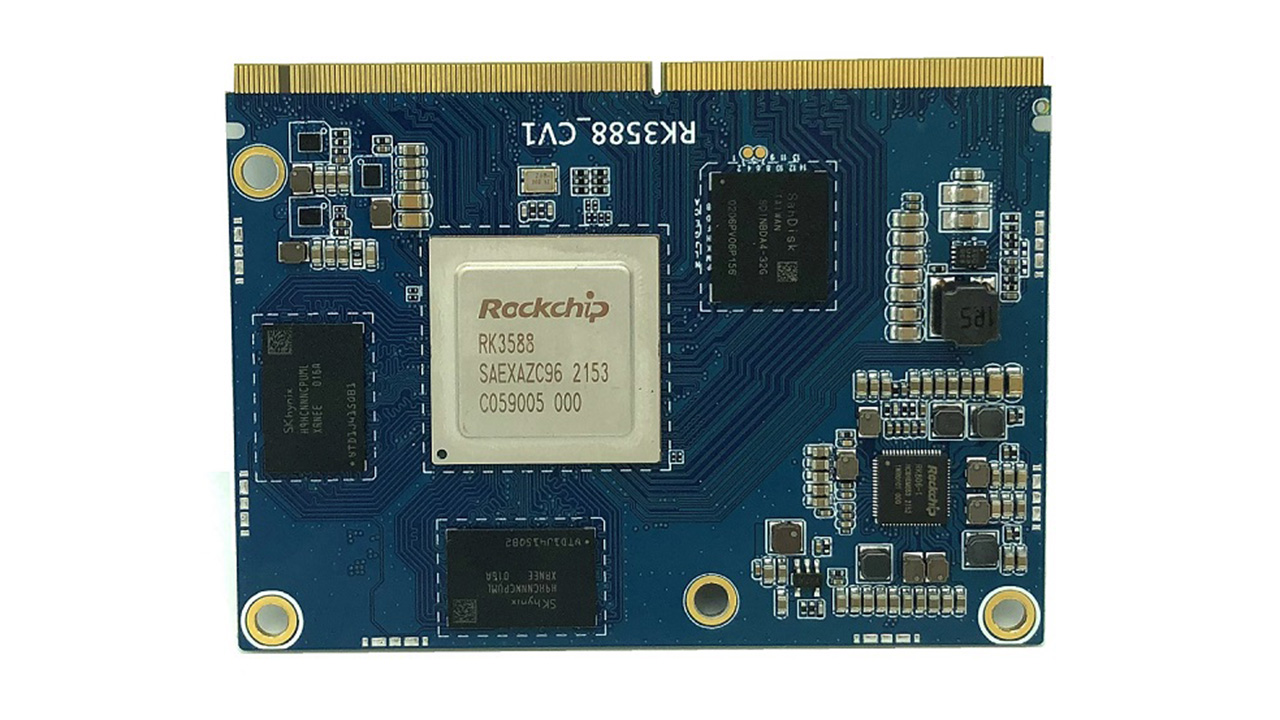Raspberry Pi Alternative Banana Pi Reveals Powerful New Board
Eight cores in a SODIMM development board
Banana Pi has revealed a new board in its BPI-R2 Pro category. In the style of the Raspberry Pi Compute Module 3 the new board requires a carrier board to break out all of the ports on offer. The compute module comes with a powerful eight-core processor, up to 8GB of RAM and 32GB eMMC, while the carrier board includes some interesting breakout options.

At the core of the Banana Pi board is a Rockchip RK3588 SoC. This brings together four Arm Cortex-A76 cores at up to 2.6 GHz with four Cortex-A55 cores at 1.8 GHz in Arm’s new DynamIQ configuration - essentially big.LITTLE in a single fully integrated cluster. It uses an 8nm process.
The board is accompanied by an Arm Mali-G610 MP4 Odin GPU with support for OpenGLES 1.1, 2.0, and 3.2, OpenCL up to 2.2, and Vulkan1.2. There's a 2D graphics engine supporting resolutions up to 8K too, with four separate displays catered for (one of which can be 8K 30FPS), and up to 8GB of RAM, though the SoC supports up to 32GB. Built-in storage is catered for by up to 128GB of eMMC flash. It offers 8K 30fps video encoding in the H.265, VP9, AVS2 and (at 30fps) H.264 codecs.
This core board takes a SODIMM-like form factor, similar to Raspberry Pi Computer Modules before the current 4th gen but looking slightly taller. This means it has an appropriately golden edge connector that slots neatly into its carrier board should you need to break out ports.
That carrier board is a monster, with ports along every edge. It looks to be about four times the area of the compute board, though no official measurements have been given. You get three HDMIs (the GPU supports version 2.1), two gigabit Ethernet, two SATA, three USB Type-A (two 2.0 and one 3) one USB Type-C, micro SD, 3.5mm headphones, ribbon connectors, and what looks very like a PCIe 3.0 x4 micro slot. The PCIe slot seems to breakout horizontally, an awkward angle if you are intending to house the board in a case. Software options include Android and Linux.
The powerful board is at the hardware sample stage, so hopefully we’ll see it available from the Banana Pi store later this year.
Get Tom's Hardware's best news and in-depth reviews, straight to your inbox.

Ian Evenden is a UK-based news writer for Tom’s Hardware US. He’ll write about anything, but stories about Raspberry Pi and DIY robots seem to find their way to him.
-
rustythorn as a courtesy, since you've been good in the past, i want to let you know i'm blocking your site on my news feed, way way too many ads. the screen is getting covered up every 5 seconds.Reply -
XaveT This looks like an awesome board, but the breakout board is awfully broad in scope. 3x HDMI (2.1 no less!), 2x gigabit ethernet, and a 4x PCIE slot? It seems like it's gonna be really expensive like that.Reply -
ezst036 As the dimensions of the physical size of these boards increases, I wish they would just put things in the standard format of mini ITX or μATX.Reply
Many of those wayward connectors could easily be placed on a riser card that gets mounted to a case slot opening, we see this in rare occasions for sound risers on high end boards. But most if not all of them look like they would fit properly in a standard ATX back panel.